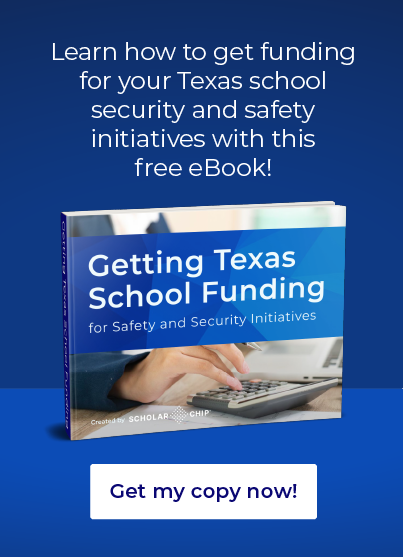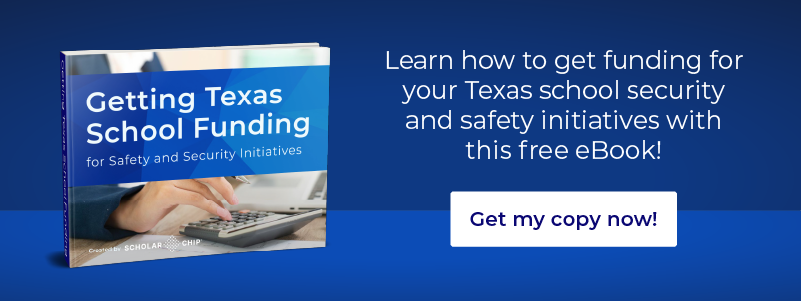The school shooting in Texas in 2018 was the catalyst for change in the state. On paper, the new Texas school safety laws that were enacted in 2019 seem to draw a balance between physical security and proactive measures like mental health support. In truth, however, Texas lawmakers put significant importance on the idea of hardening schools by focusing a large portion of appropriated funds specifically on those types of projects. However, hardening strategies may not be the most effective means of ensuring a safe and secure school. In fact, they can cause more problems than they solve.
School administrators need to consider proactive strategies that improve the safety of their schools, as money for hardening programs may draw funds away from such measures. By doing so, schools not only create a safer learning environment but also better lifelong outcomes for students.
The Challenge of Strategies That Only Focus on Hardening Schools
When an incident happens, the initial focus of lawmakers, administrators, and districts tends toward hardening strategies. The hope is that in a best-case scenario, adding bullet-proof glass, video surveillance, metal detectors, and armed resource officers will act as a deterrent. In the worst case, or so administrators and lawmakers imagine, these elements will serve as a last line of defense.
Yet more and more studies are showing that the theater of security created by hardening activities are doing little to prevent a shooting or school violence. Worse, research points to these activities doing the opposite. Students may feel less safe in an environment that feels more like a prison than a learning environment.
Not all hardening activities are controversial or lack value. But administrators should take a broader look at what school safety means.
Broadening the Focus of School Safety
When considering school safety strategies, it’s important to recognize that they fall into three categories. The first, reactive strategies, is only used when an active situation is occurring. For instance, an alarm system that connects directly to the police would be a reactive safety mechanism. Ballistic resistant portals are another example.
The second category is deterrents. Many cross back and forth between being a deterrent and a reactive measure. Texas school marshals, who are armed but whose identities are kept secret, are one such example. Metal detectors and a prominent security officer presence are others. Hardening activities tend to fall into these first two categories, with an expected amount of overlap.
The last is proactive measures. These strategies, in contrast to the other categories, are farther looking and typically address the root of a potential security issue. Mental health services, identifying and addressing bullying, and counseling students are proactive strategies that make a school safer in the long run.
Promoting Proactive Student Safety
When it comes to proactive strategies, certain ones have been proven to improve school safety. For instance, addressing delinquency, bullying, and drug and alcohol problems are strategies that have been shown to make schools safer.
Going beyond identifying and managing behavioral issues has even farther-reaching positive results. One of these is implementing Social Emotional Learning (SEL) programs into a school. SEL is a data-backed and -proven framework that reduces bullying and improves school safety, while also increasing student academic outcomes.
SEL and school climate are symbiotic, with each supporting and informing the other. As SEL frameworks are put in place and refined, school climate improves. Part of SEL is to measure and review results, so an SEL program is constantly improving, continuing to better school climate. When schools invest in frameworks like SEL as a safety strategy, students are more likely to succeed in school and in life.
Hardening schools have taken the forefront in many of the conversations about school shootings, likely because they are easy to see and point to as proof of progress and response. While certain hardening activities have broader positive security impacts, there is little evidence to support the idea that hardening actually improves school safety, and in fact, it can be a detriment to a student’s feeling of safety.
Administrators need to think about the end result of their security initiatives. They need to consider and even prioritize proactive approaches that lead to positive school climate changes in addition to short-term, reactive solutions. Addressing behavioral problems through monitoring and counseling is one way to make school safer. Improving student outcomes and emotional learning capacity through frameworks like SEL has proven to reduce violence in schools, increase graduation rates and student performance, and better prepare students for life.
ScholarChip offers a solution called Alternative Behavior Educator (ABE). This innovative program enables school administrators and counselors to identify, monitor, and improve student behavior throughout a student’s career, while giving them powerful data-driven reports that quickly flag at-risk students, help monitor and chronicle progress, and help them identify school safety risks before incidents.
To learn how ScholarChip can help make Texas schools safer or get free recommendations, feel free to contact us for a free 1-on-1 consultation today!


